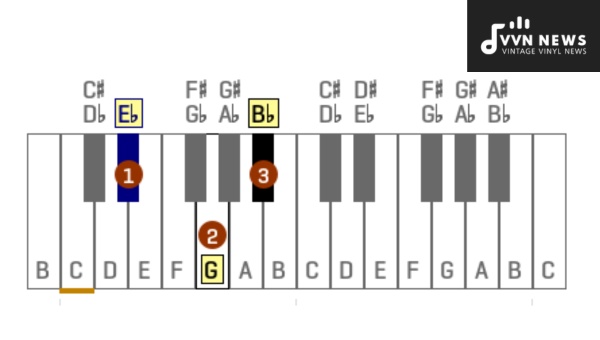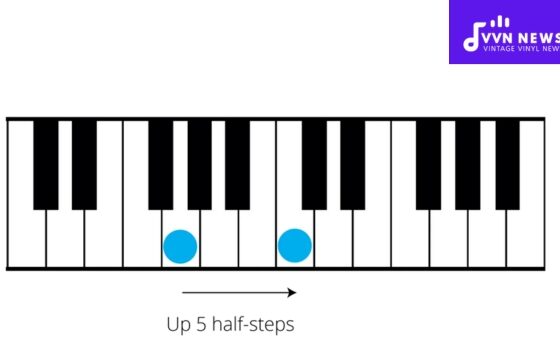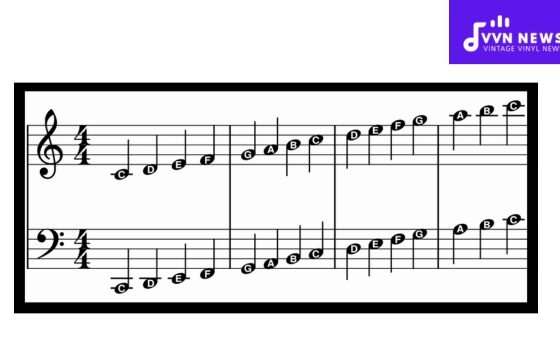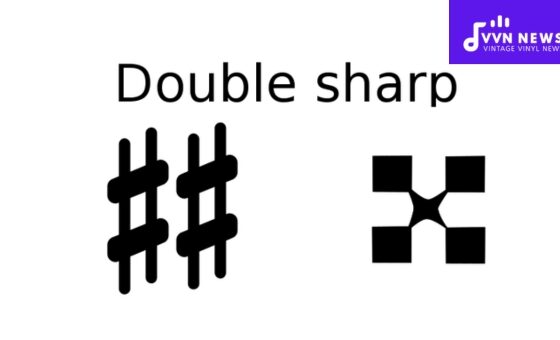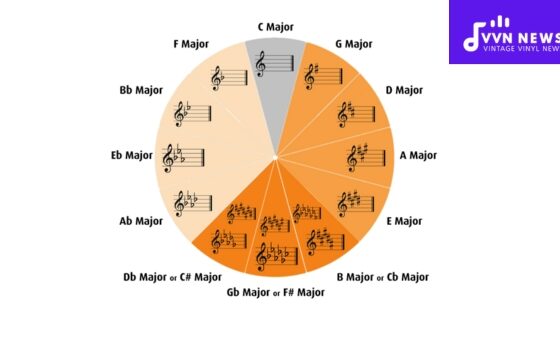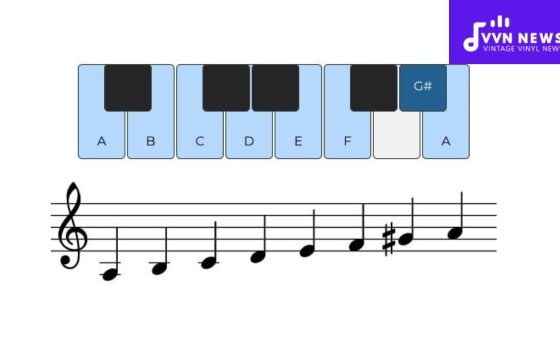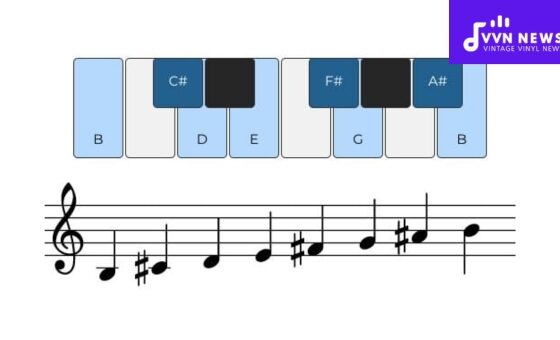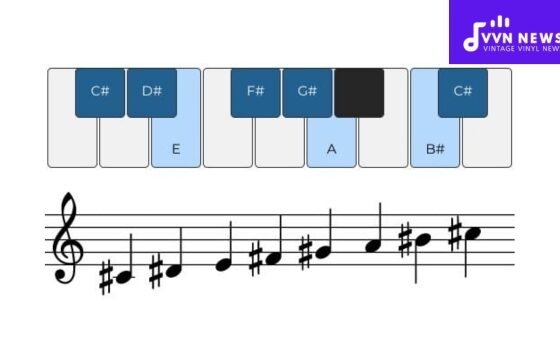When it comes to understanding different musical chords and progressions, there is a vast array of options to explore.
We will delve into the world of music theory and specifically focus on understanding the E Flat Major Triad.
Whether you are a seasoned musician or just starting your musical journey, this foundational chord is an essential component in various genres and compositions.
I will guide you through the basics of the E Flat Major Triad, its composition, and its significance in shaping melodies.
The E Flat Major Triad consists of three notes: E♭, G, and B♭. Each note plays a distinct role in creating the chord’s tonal quality.
Understanding how these notes interact with each other is crucial in deciphering their role within a musical piece. The foundation of any major triad lies in its root note, which in this case is E♭.
This note establishes the tonal center of the chord and serves as a point of reference for all other notes within the triad.
The second note that contributes to shaping its character is G, which is located two steps above the root note on the musical scale.
We have B♭, which complements and completes the triad by being three steps above the root note.
What is an E Flat Major Triad?
An E♭ Major Triad is a three-note chord consisting of the notes E♭, G, and B♭. It belongs to the family of major triads, which are fundamental building blocks in music theory. The chord possesses a bright and uplifting sound that makes it versatile across various genres like classical, jazz, and pop. The chord’s tonal center is established by the root note E♭, providing a sense of stability within the composition. The G note adds a major third interval above the root, further enhancing its character. Lastly, the B♭ note contributes to the chord’s richness by being a perfect fifth above the root.
How is the E Flat Major Triad Constructed?
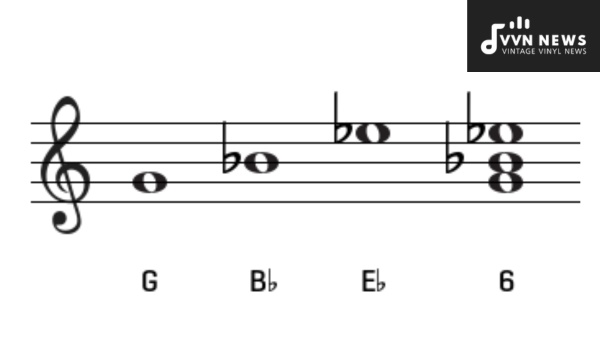
The construction of the E♭ Major Triad follows a specific pattern that helps create its unique sound. The chord consists of three notes, known as the root, third, and fifth. Let’s break down the construction process step-by-step:
- Starting with the Root: The root note of the E♭ Major Triad is E♭ itself. This serves as the foundation for the entire chord and provides a sense of stability.
- Adding the Third: The next step is to add the third note, which defines whether the chord is major or minor. In this case, we will add G to create a major triad. The interval between E♭ and G forms a major third interval.
- Including the Fifth: Lastly, we introduce the fifth note to complete our triad structure and add depth to the chord. B♭ is added to form a perfect fifth above E♭.
We take E♭ as our root note and build upon it by adding G as a major third and B♭ as a perfect fifth. Altogether, this creates a rich and harmonious E♭ Major Triad that can be utilized in various musical compositions.
Understanding how chords are constructed allows musicians to create their own progressions, harmonies, and melodies while complementing existing musical arrangements effectively.
Also Read: 19 Best Flanger Pedals In 2025
What Is the Function of the E Flat Major Triad in Music?
The E♭ Major Triad plays a significant role in music due to its versatile and harmonically rich nature. Let’s explore its various functions:
- Tonic Function: In the key of E♭ major, the E♭ Major Triad acts as the tonic chord, serving as the home base or point of rest. It provides a sense of resolution and stability within the musical composition.
- Dominant Function: As a dominant chord, the E♭ Major Triad creates tension and leads to a resolution when followed by the A♭ or B diminished chord. This dominant function is commonly used in chord progressions to create movement and drive within the music.
- Subdominant Function: The E♭ Major Triad can also function as a subdominant chord when transitioning to the IV (A♭) or VI (C) chords. This function adds a sense of anticipation and sets up the tonal progression for further development.
- Modal Interchange: In modal interchange, chords are borrowed from different scales to add color and variation. The E♭ Major Triad can be borrowed from parallel minor keys such as E♭ minor. This adds an interesting twist to compositions and can evoke different emotions or moods.
- Harmonic Support: The bright and uplifting sound of the E♭ Major Triad makes it easily blendable with other chords within a piece of music. It provides harmonic support for melodies, helping to create lush harmonies and enriching overall sound.
These various functions helps musicians to create compelling compositions, build tension and release, establish tonal centers, and add depth and complexity to their musical arrangements.
E Flat Major Triad vs. E Major Triad: What’s the Difference?
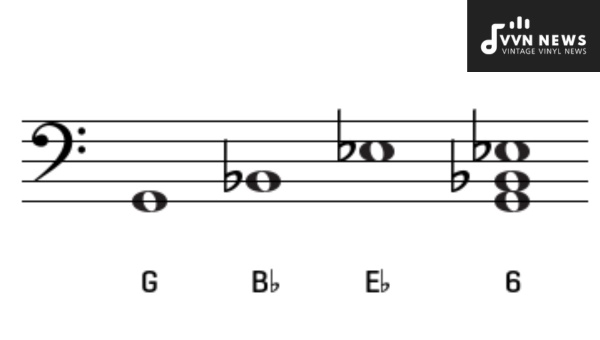
When comparing the E Flat Major Triad to the E Major Triad, there are a few key differences that distinguish them from each other. These differences lie in the composition of the chords and the overall tonal quality they produce.
E Flat Major Triad:
- The E♭ Major Triad consists of the notes E♭, G, and B♭.
- It is known for its warm and robust sound due to its use of flat notes.
- The root note, E♭, provides a solid foundation for this chord.
- Being centered around a flat note gives it a distinctive tonal character.
E Major Triad:
- The E Major Triad comprises the notes E, G♯, and B.
- It has a bright and vibrant sound due to the use of sharp notes.
- The root note, E, establishes a tonal center that is often associated with uplifting and energetic melodies.
- The presence of a sharp third interval adds sparkle and tension to this triad.
While both chords share similar qualities as major triads, their distinctions lie in their specific notes.
The use of flats in E Flat Major Triad creates a warmer and more robust sound compared to the bright and vibrant feeling produced by the sharp notes in the E Major Triad.
These differences provide musicians with various tonal options depending on their desired mood or musical genre.
Also Read: A Flat Minor Pentatonic Scale [Unleash Subtle Tension In Your Music]
The E Flat Major Triad consists of the three notes: E♭, G, and B♭. Let’s take a closer look at each note and its role within the chord:
- E♭ (E Flat): This is the root note of the triad, providing a foundational tone for the chord. It is located three steps below the E (natural) on a musical scale. The E♭ gives the chord its name and serves as a reference point for understanding its composition.
- G: This note is known as the major third interval above the root note E♭. It is located two steps above the root note on a musical scale. The G adds brightness and character to the chord, creating tension and resolution within a composition.
- B♭ (B Flat): Positioned three steps above the root note, B♭ contributes to the rich texture of the triad. It acts as a perfect fifth interval from E♭, adding depth and stability to the overall sound.
Together, these three notes combine to form the distinct sound and tonality of an E Flat Major Triad. Their individual contributions create harmony and balance within compositions across various musical genres.
How to Play the E Flat Major Triad on Piano/Guitar?
Playing the E♭ Major Triad on piano or guitar is relatively straightforward. Here’s a step-by-step guide on how to do it:
On Piano:
- Identify the E♭ key on your piano keyboard.
- Place your right hand’s thumb on E♭, which is the root note of the triad.
- Using your middle finger, press down G, which is positioned two steps above E♭.
- Finally, with your pinky finger, play B♭, located three steps above E♭.
You can also try playing the triad in different inversions by rearranging the order of the notes while maintaining their structure.
On Guitar:
To play the E♭ Major Triad on a guitar, you have a few options:
- Open Chord Version:
- Place your index finger on the 6th string 6th fret (E♭).
- Position your ring finger on the 5th string 8th fret (G).
- Place your pinky finger two frets above your ring finger on the 4th string 8th fret (B♭).
- Barre Chord Version:
- Barre all six strings with your index finger on the 6th fret.
- Use your ring finger to press down the 5th string at the 8th fret.
- Position your pinky finger two frets above your ring finger to play B♭.
Remember to adjust these chord shapes based on personal comfort and preference while maintaining the placement of each note.
Learning and practicing different inversions of this triad shape can help you explore various voicings and create smooth transitions between chords in different musical contexts.
Also Read: B Flat Major Scale [Exploring This Warm & Mellow Key]
E Flat Major Triad Inversions
In music theory, chord inversions refer to rearranging the order of the notes within a chord. This technique allows for different voicings and can add depth and variety to your compositions. Let’s explore the inversions of the E Flat Major Triad.
Root Position
The root position is when the root note, E♭, is in the lowest position of the triad. In this position, the G note is a third above the root, and B♭ is a fifth above the root. You can think of this as the standard starting point for the triad.
First Inversion
To create the first inversion of the E Flat Major Triad, you need to move the root note up an octave. This means that G becomes the new lowest note in the chord. The first inversion consists of G (the new lowest note), B♭ (a third above G), and E♭ (a sixth above G).
Second Inversion
Inverting again gives us the second inversion of the E Flat Major Triad. Now, B♭ becomes the new lowest note in the chord. The notes in the second inversion are B♭ (the new lowest note), E♭ (a fourth above B♭), and G (a sixth above B♭).
Also Read: E Flat Minor Pentatonic Scale [Master This Key With Our Guide]
Common Chord Progressions with E Flat Major Triad
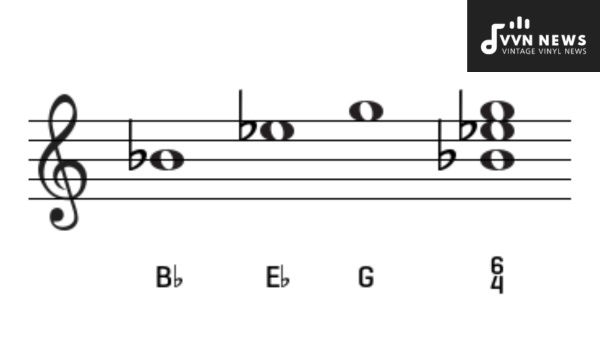
Chord progressions, a series of chords played in a specific order, play a vital role in music composition. Understanding common chord progressions involving the E♭ Major Triad opens up a wide range of possibilities for musicians. Here are some frequently used chord progressions that incorporate the E♭ Major Triad:
- I – IV – V: This is one of the most common chord progressions in Western music. In the key of E♭ major, it would consist of the chords E♭, A♭, and B♭.
- VI – IV – I – V: This progression adds a bit of variation by starting on the sixth chord of the key signature. In E♭ major, it would consist of Cm, A♭, E♭, and B♭.
- III – VI – II – V: This progression adds some complexity by incorporating more chords from the key signature. In E♭ major, it would consist of Gm, Cm,
Fm/B♭, and B♭. - IV – I: This simple progression helps establish a sense of resolution and is often used as an ending cadence in music compositions. In E♭ major, it involves A♭ to E ♭.
- ii7 – V7 – I: This classic jazz progression adds a touch of sophistication to your music. In the key of E ♭ major, it would include Fm7 (ii7), B ♭ 7 (V7), and E ♭ (I).
These chord progressions are just starting points for your creativity. Exploring different variations or combining them with other chords will enhance your musical compositions and allow for limitless creativity.
Also Read: E Flat Minor Blues Scale [Infuse Your Tunes With Moody Blues]
FAQs About The E Flat Major Triad
How is the E Flat Major Triad constructed?
The E♭ Major Triad is constructed by stacking the root note E♭, a major third interval G, and a perfect fifth interval B♭.
What is the difference between E Flat Major Triad and E Major Triad?
The main difference lies in the root note: E♭ Major Triad has an E♭ root, while the E Major Triad has an E root.
What are the notes of the E Flat Major Triad?
The notes of the E♭ Major Triad are E♭, G, and B♭.
How can I play the E Flat Major Triad on piano or guitar?
On piano, you can play it by simultaneously pressing the keys for E♭(E flat), G, and B♭(B flat). On guitar, you can play it by forming a bar chord on the 6th fret with your index finger and placing your other fingers on the appropriate frets.
What are some common chord progressions that use the E Flat Major Triad?
Common chord progressions that incorporate the E♭ Major Triad include I-IV-V (E♭-A♭-B♭) and vi-IV-I-V (Cm-Ab-Eb-Bb), among others.
Conclusion
The E Flat Major Triad is a fundamental chord in music theory. Comprised of the notes E♭, G, and B♭, this triad offers a bright and uplifting sound that is commonly used in a variety of musical genres.
Understanding its construction and function within a composition allows musicians to create captivating melodies and harmonies.
Whether you’re a beginner or an experienced musician, mastering the E Flat Major Triad opens up a world of musical possibilities.
So grab your instrument and explore the rich soundscape that this chord has to offer.
